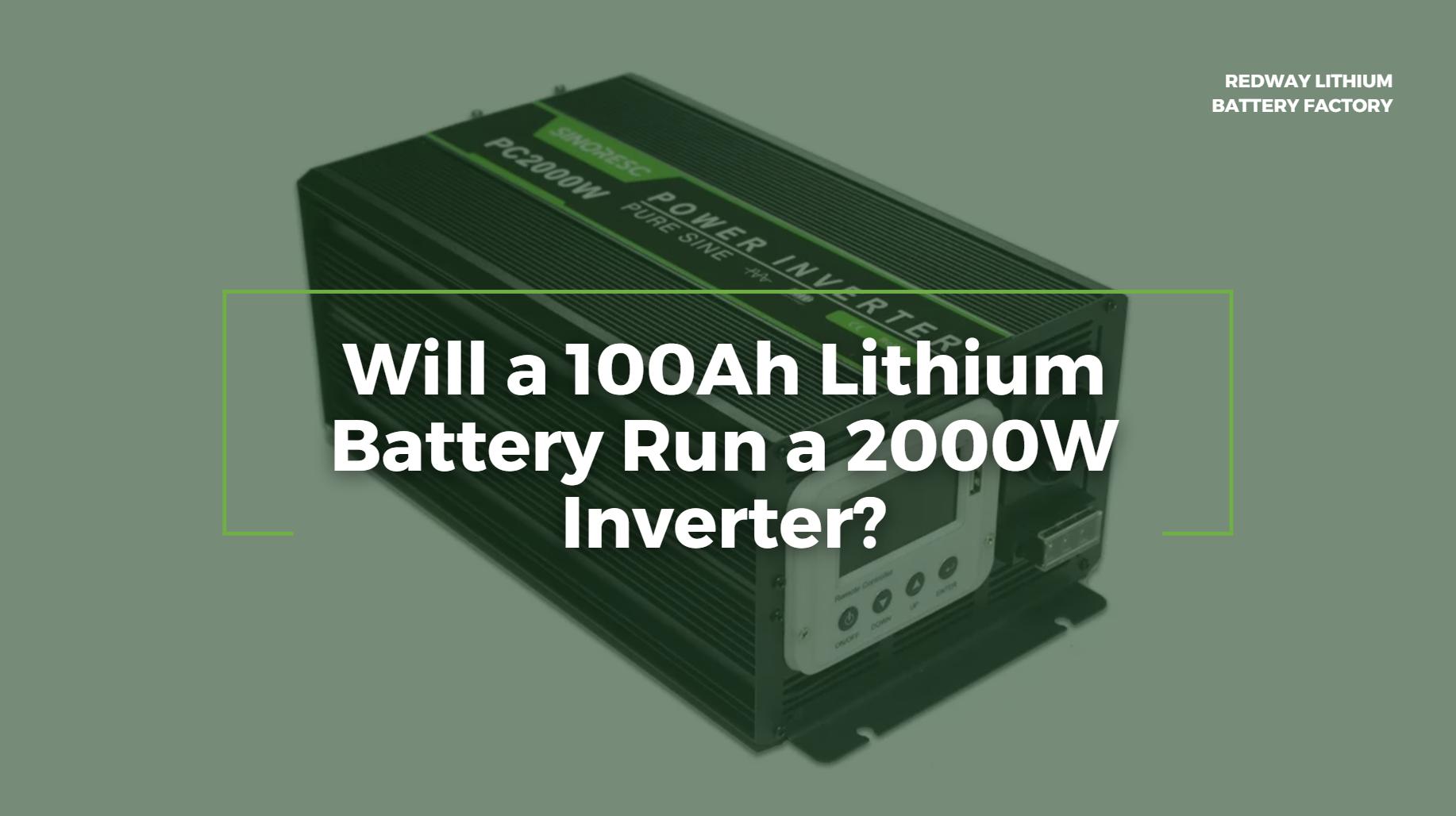
How Can a 100Ah Lithium Battery Support a 2000W Inverter?
Using a 100Ah lithium battery with a 2000W inverter is theoretically possible, but practical limitations exist regarding runtime and efficiency. Understanding these factors is crucial for ensuring optimal performance and safety when powering devices with this setup.
Can a 2000W Inverter Be Compatible with a 100Ah Lithium Battery?
Yes, a 2000W inverter can be connected to a 100Ah lithium battery, but it is not ideal for sustained use at full capacity due to the high current demands of the inverter. The inverter will draw approximately 166.7 amps at peak load (assuming it operates at 12V), which exceeds what most 100Ah batteries can provide without significant discharge.Chart: Current Draw Calculation
| Power (W) | Voltage (V) | Current Draw (A) |
|---|---|---|
| 2000 | 12 | 166.7 |
What Factors Affect Runtime When Using a 100Ah Battery with a 2000W Inverter?
Several factors influence how long a 100Ah lithium battery can run a 2000W inverter:
- Inverter Efficiency: Most inverters operate at about 85% to 90% efficiency, meaning they draw more power than they output.
- Depth of Discharge (DoD): Lithium batteries typically have an optimal DoD of around 80%, meaning only about 80Ah is usable from the 100Ah battery.
- Load Type: Continuous loads will drain the battery faster than intermittent loads, such as starting motors or appliances.
For example, if we assume an inverter efficiency of 90%, the effective power draw becomes:
Using this effective power draw, we can calculate the current draw:
Given that the usable capacity is around 80Ah, running this setup would deplete the battery in approximately:
How Do You Calculate the Required Capacity for Running a 2000W Inverter?
To determine how much battery capacity is needed to run a 2000W inverter, you can use the following formula:
For example, if you want to run your inverter for 2 hours, you would need:
This calculation illustrates that to run a 2000W inverter effectively for two hours, you would need at least 333Ah, far exceeding what is available from just one 100Ah battery.Chart: Required Capacity Based on Runtime
| Runtime (Hours) | Required Capacity (Ah) |
|---|---|
| 1 | 167 |
| 2 | 333 |
| 3 | 500 |
| 4 | 667 |
Why Is It Recommended to Use a Larger Capacity Battery?
Using a larger capacity battery, such as one rated at 200Ah or more, is recommended for several reasons:
- Sustained Power Supply: A larger battery can provide enough current without depleting too quickly, allowing you to run devices longer.
- Reduced Strain on the System: A larger capacity helps maintain stability in power delivery, reducing wear on both the battery and inverter.
- Better Performance Under Load: Higher capacity batteries can handle peak loads more effectively, accommodating devices that require surge power.
How to Ensure Safe Operation of the Inverter and Battery System?
To ensure safe operation when using a 100Ah lithium battery with a 2000W inverter, consider these guidelines:
- Monitor Load Levels: Keep track of how much power your devices are drawing to avoid overloading the system.
- Use Proper Wiring: Ensure all connections are secure and use appropriately rated cables to handle high currents.
- Install Fuses or Circuit Breakers: Protect your system from overloads by installing fuses or circuit breakers in line with your setup.
- Consult Professionals: If unsure about compatibility or safety measures, consult an expert in electrical systems.
FAQ Section
Q: Can I use a 100Ah lithium battery with a 2000W inverter?
A: Yes, but it may only run for about 26 minutes under full load due to high current demands.Q: What capacity do I need for longer runtimes?
A: For sustained use, consider at least 333Ah if running continuously for two hours.Q: Why is depth of discharge important?
A: Maintaining an optimal depth of discharge helps prolong battery life and ensures reliable performance.Q: What safety measures should I take?
A: Monitor load levels, use proper wiring, install fuses, and consult professionals when necessary.
OEM Tips
For businesses looking to make OEM orders related to lithium batteries or inverters, partnering with established manufacturers like Redway Battery is essential. With over 13 years of experience, Redway specializes in high-quality lithium batteries that provide excellent performance and safety.When placing an OEM order:
- Research manufacturers thoroughly.
- Discuss customization options based on specific needs.
- Ensure compliance with local regulations regarding product specifications.
Choosing a reliable partner like Redway Battery can significantly enhance product offerings while meeting consumer demand for high-quality energy solutions.
LiFePO4 Battery Expert Views
“Understanding the compatibility between battery capacity and inverter requirements is crucial for effective energy management,” says Dr. Emily Carter, an expert in renewable energy systems. While using smaller batteries like the 100Ah lithium battery with high-demand inverters is possible, consumers should prioritize larger capacities for better performance and longevity.
